43 10 point rating scale labels
5 Point Rating Scale Labels - chapter 3 levels of measurement and ... 5 Point Rating Scale Labels - 17 images - chapter 7, beers in the hall srm ebc scale, item measurement report of all items and the three rating scale, chapter 7, ppcexpo.com › blog › 5-point-likert-scale-anal5 Point Likert Scale Analysis, Interpretation and Examples Also, on your part, the 5 point scale works well when sampling the opinions of a large audience. It is so because you have lesser irrelevant options to go through and understand. 3. The 5 point scale tends to produce better data distributions. This just means that you can reach into the true emotions of your respondents with the 5 point scale.
Scaling Techniques - Definition, Types - The Investors Book 14.05.2019 · Dichotomous: A nominal scale that has only two labels is called ‘dichotomous’; for example, Yes/No. ... Semantic Differential Scale: A bi-polar seven-point non-comparative rating scale is where the respondent can mark on any of the seven points for each given attribute of the object as per personal choice. Thus, depicting the respondent’s attitude or perception towards …
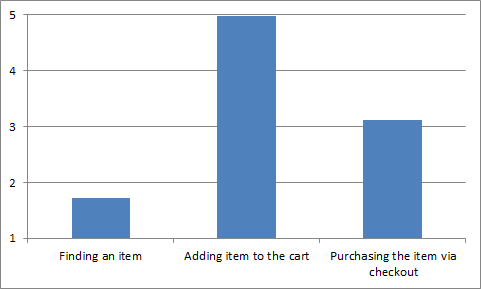
10 point rating scale labels
Top 10 Likert Scale Examples for your next survey! | QuestionPro Odd Likert scales are used when the survey creator intends to provide freedom to the respondents for the type of feedback that they provide. Learn more: Odd Likert Scale Survey Template. 3-point Likert scale example for agreement: A Likert scale that offers agree and disagree as to the farthest points along with a neutral option. The 4,5, and 7 Point Likert Scale + [Questionnaire Examples] - Formpl A 10 point Likert scale will offer more variance than a smaller Likert scale, provide a higher degree of measurement precision and provide a better opportunity to detect changes and more power to explain a point of view. ... Scale Rating; The Rate scale records how much or how well it happened. The scale usually has several points ranging from ... What is a Survey Rating Scale? + [Types & Question Examples] 05.03.2020 · Smiley Scale A smiley scale is a type of rating scale that uses emojis to represent emotions ranging from negative to neutral and positive. It is a 5-point rating scale that swiftly communicates the emotions of the respondent and it is used for qualitative data collection.. It allows the respondent to communicate his or her feedback, opinions and experiences in terms …
10 point rating scale labels. Survey rating scales: numbered vs worded lists | SurveyMonkey With worded labels, the researcher has the freedom to score and label categories however they feel without confusing the respondent. Scaling can also be unbalanced, and the scoring could look something like this: Extremely Good = 10 Very Good = 8 Good = 6 Not Bad = 5 Bad = 3 The Worst = 0 1-to-10 rating scale survey template - Survicate 1-to-10 Rating Scale Survey Template 🚀 Survicate 1-to-10 rating scale survey template Use this template See all templates Interact with the survey template below to see how it works: No time limit on the free plan Set up in minutes No credit card required Find out what your customers think of you with our 1-to-10 rating scale survey template. › blog › behaviorally-anchored-rating-scaleBehaviorally Anchored Rating Scale: A Full Guide with Examples Aug 23, 2022 · The most commonly used scale is the five-level graphic rating scale. It is a value of 1 to 5, with a brief label for each level. It is a value of 1 to 5, with a brief label for each level. In the past, typical labels were “satisfactory,” “average”, “excellent”, “superior”, and “unacceptable”. Should All Scale Points Be Labeled? - MeasuringU They didn't disentangle the effects of labels and number of points but ultimately recommended that Statistics Netherlands use a ten-point scale with only the endpoints labeled for both international comparability and the increased ability to discriminate between happy and unhappy gained from adding more points.
How to Label Response Scale Points in Your Survey | Qualtrics Here's an example of a seven-point bipolar scale where, through the use of appropriate modifiers, all responses are mutually exclusive of one another. Finally, to ensure that you get the highest-quality data possible, keep these four guidelines in mind as you practice labeling response scales: waypointgroup.org › why-a-0-10-scale-is-your-bestStop Debating the Survey Question Scale: Why a 0-10 Scale is ... Jan 10, 2017 · In the customer’s mind, there’s a difference between a rating of 6 and a rating of 7 (for example) that you can’t capture on a 5-pt scale. So, on an 11-pt scale (i.e. 0 – 10), you’ll get a much broader spread of the results yielding better predictive analysis. 20 Free Ready-Made Survey Rating Scale Examples | On a Scale of 1 to 10 ... The most commonly used Graphic Scales indicate the answer options on a scale of 1 to 10 and 1 to 5. The stars and numbers represent a quantity that can be averaged and analyzed similarly to Linear Numeric Scales. How would you rate your experience with AidaForm website? 1 - Awful, 3 - Neutral, 5 - Great Sample Likert Scales - Marquette University Frequency - 7 point. 1 - Never. 2 - Rarely, in less than 10% of the chances when I could have. 3 - Occasionally, in about 30% of the. chances when I could have. 4 - Sometimes, in about 50% of the chances when I could have. 5 - Frequently, in about 70% of the. chances when I could have. 6 - Usually, in about 90% of the chances I ...
Rating Scale: Definition, Methods and examples- Voxco 19.08.2021 · Assign clear and precise labels to the endpoints of your scale. Avoid response bias by including both endpoints in your question ( satisfied/dissatisfied, easy/not easy, likely/not likely, etc). It’s better to make 1 the negative and the other end 5 or 10 as the positive point. How to Label Your 10-Point Scale - Versta Research Plenty of research shows that numeric scales going from 1 to 10 (ten points) are less effective than numeric scales going from 0 to 10 (eleven points). A recently published article in Survey Practice adds more evidence to that claim, and also suggests that the midpoint of the scale should be labeled along with the endpoints: Stop Debating the Survey Question Scale: Why a 0-10 Scale is … 10.01.2017 · Here are the general reasons why my default assumption is to always use a 0 – 10 scale for rating attributes on customer feedback questionnaires: Anchors: For web-based surveys, people generally don’t read the text anchors – they go through the survey quickly – and the science shows us that people know that a rating of 0 is the bad end on a 0-10 scale. Likert Scale Definitions and Examples. Use them for free. - AidaForm The size of a Likert scale may vary, but scales with odd numbers of points prevail as they can have a midpoint (neutral answer). An even number of labels, as in a 4-point or 6-point Likert scale, make respondents choose strictly between "for" or "against". Most commonly, survey specialists use a 5-point scale (see examples A, B, D).
User Experience Rating Scales with 7, 11, or 101 Points: Does It Matter? The standard VAS is a 10-cm line forming a continuous scale, the ends of which mark the minimum and maximum levels (typically labeled) of the rated attribute. Different line lengths appear to lead to similar ratings, at least, within the range of 4-10 cm (Kreindler, Levitt, Woolridge, & Lumsden, 2003).
Choice of rating scale labels: implication for minimizing patient ... the 216 consenting participants were randomly assigned to one of the three survey form conditions with the same statements but differing on the anchors for rating scales: (1) balanced equal-interval rating scale (''strongly disagree,'' ''disagree,'' ''neutral,'' ''agree,'' and ''strongly agree''; (2) positive-packed rating scale (''strongly …
Survey Response Scales: How to Choose the Right One - CXL 17.04.2022 · How you design a survey or a form will affect the answers you get. This includes the language you use, the order of the questions, and, of course, the survey scale: the default values and ranges you use. Survey response scales can be embedded in the survey (e.g., 1–5, 1–10, etc.), chosen via a drop-down menu, or included as part of the survey language.
Your Guide to Rating Scale Questions in 2022 - Qualtrics 15.01.2021 · It should be easy to interpret the meaning of each scale point - i.e. the meaning of scale points should be interpreted identically by all respondents. 2. Using the right rating scale. The breakdown of each rating scale type above should give you an idea of how you can incorporate these into your survey (see the bolded text for a quick reference). However, if …
Tropical cyclone scales - Wikipedia Tropical cyclones are ranked on one of five tropical cyclone intensity scales, according to their maximum sustained winds and which tropical cyclone basin(s) they are located in. Only a few scales of classifications are used officially by the meteorological agencies monitoring the tropical cyclones, but other scales also exist, such as accumulated cyclone energy, the Power …
The 10-Point Scale - The Rules Revisited We use a 10-point scale to rank our perception of a woman's looks, and on occasion will use it to judge her personality as well. Rarely, the two will be combined on the same 10-point scale (see below). The lower end of the scale is a 1, and represents the ugliest girl a man has ever seen. Usually this is a woman with a combination of physical ...
Level of measurement - Wikipedia Level of measurement or scale of measure is a classification that describes the nature of information within the values assigned to variables. Psychologist Stanley Smith Stevens developed the best-known classification with four levels, or scales, of measurement: nominal, ordinal, interval, and ratio. This framework of distinguishing levels of measurement originated …
7 point likert scale labels 7 point likert scale labels - iccleveland.org The short answer is that 7-point scales are a little better than 5-points—but not by much. An even number of labels, as in a 4-point or 6-point Likert scale, make respondents choose strictly between "for" or "against". The psychometric literature suggests that having more scale points is better but there is a diminishing return after around ...
Employee Performance Rating Scales in 2022: Examples & Definitions Overall performance ratings are given on a 5-point scale, observing employees with performances that are: 5 = Leading. 4 = Strong. 3 = Solid. 2 = Building. 1 = Not Meeting Expectations. Goals are also tracked using a 3-point rating scale that measures whether a goal or project was on time, on budget, and accomplished.

Figure 1 from Comparison of the hedonic general Labeled Magnitude Scale with the hedonic 9-point ...
cxl.com › blog › survey-response-scalesSurvey Response Scales: How to Choose the Right One - CXL How you design a survey or a form will affect the answers you get. This includes the language you use, the order of the questions, and, of course, the survey scale: the default values and ranges you use. Survey response scales can be embedded in the survey (e.g., 1-5, 1-10, etc.), chosen via a drop-down menu, or included as part of the survey language.
Behaviorally Anchored Rating Scale: A Full Guide with Examples 23.08.2022 · Other scales exist, ranging from three performance levels to 10 or more. About fifteen years ago, an engineering company insisted on a point rating scale from 0.01 to 10.00 with two decimals. Their justification was that their engineers enjoyed the “illusion of precision”.
Rating Scales For Performance Reviews - Crewmojo But here's the thing, when using a 10 point rating scale you may wish to break the results into 3 categories just like the NPS algorithm . A rating of 1 to 6 equates to below expectations, a 7 or 8 equates to meeting expectations, and a 9 or 10 equates to exceeding expectations.
› blog › rating-scaleWhat is a Survey Rating Scale? + [Types & Question Examples] A numerical rating scale is typically used to quantify qualitative data such as pain, feelings, product satisfaction, likelihood to recommend, customer loyalty and the like. Usually, the researcher labels the endpoints of the numerical rating scale in terms of the value that is being measured so that both ends represent the extremes of this value.
Performance Rating Scale | How to build a fail proof ... - unremot Let us see one of the types of rating scale examples 1-5, 1 - Poor 2 - Needs Improvement 3 - Meets expectations 4 - Exceeds requirement 5 - Exceptional work In the above rating scale 1-5 example, we can see that there are two categories for employees who weren't able to meet expectations.
› blog › three-tips-forYour Guide to Rating Scale Questions in 2022 - Qualtrics Even on an 11-point (0-10) scale respondents start to have difficulty reliably placing themselves, lowering the rating scale quality. ... Going back to the goals of survey rating scale points and their labels, we want all respondents to easily interpret the meaning of each scale point and for there to be no room for different interpretations ...
15 Common Rating Scales Explained - MeasuringU Here are 15 scales, in roughly the order of most to least commonly used. 1. Linear Numeric Scale In a linear numeric scale, participants provide some numeric response to a question or statement. This can include things like satisfaction, ease, brand favorability, feature importance, or likelihood to recommend.

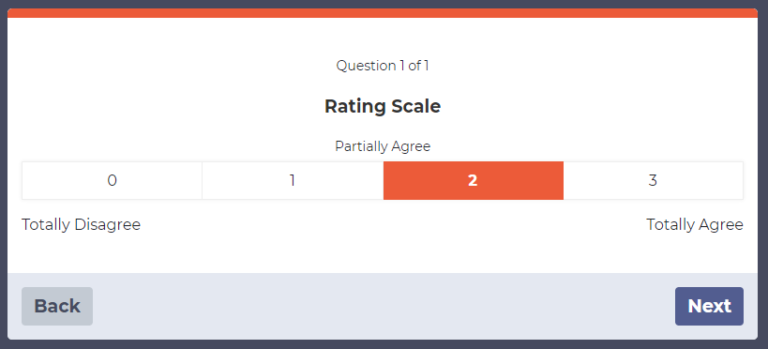

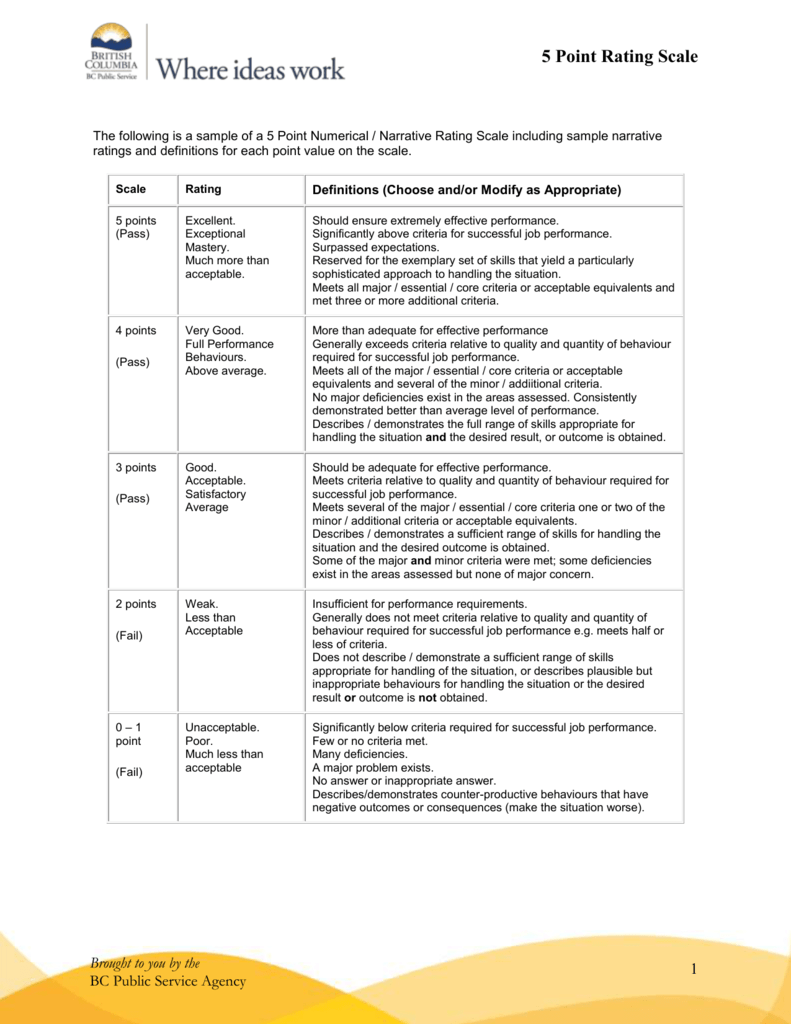

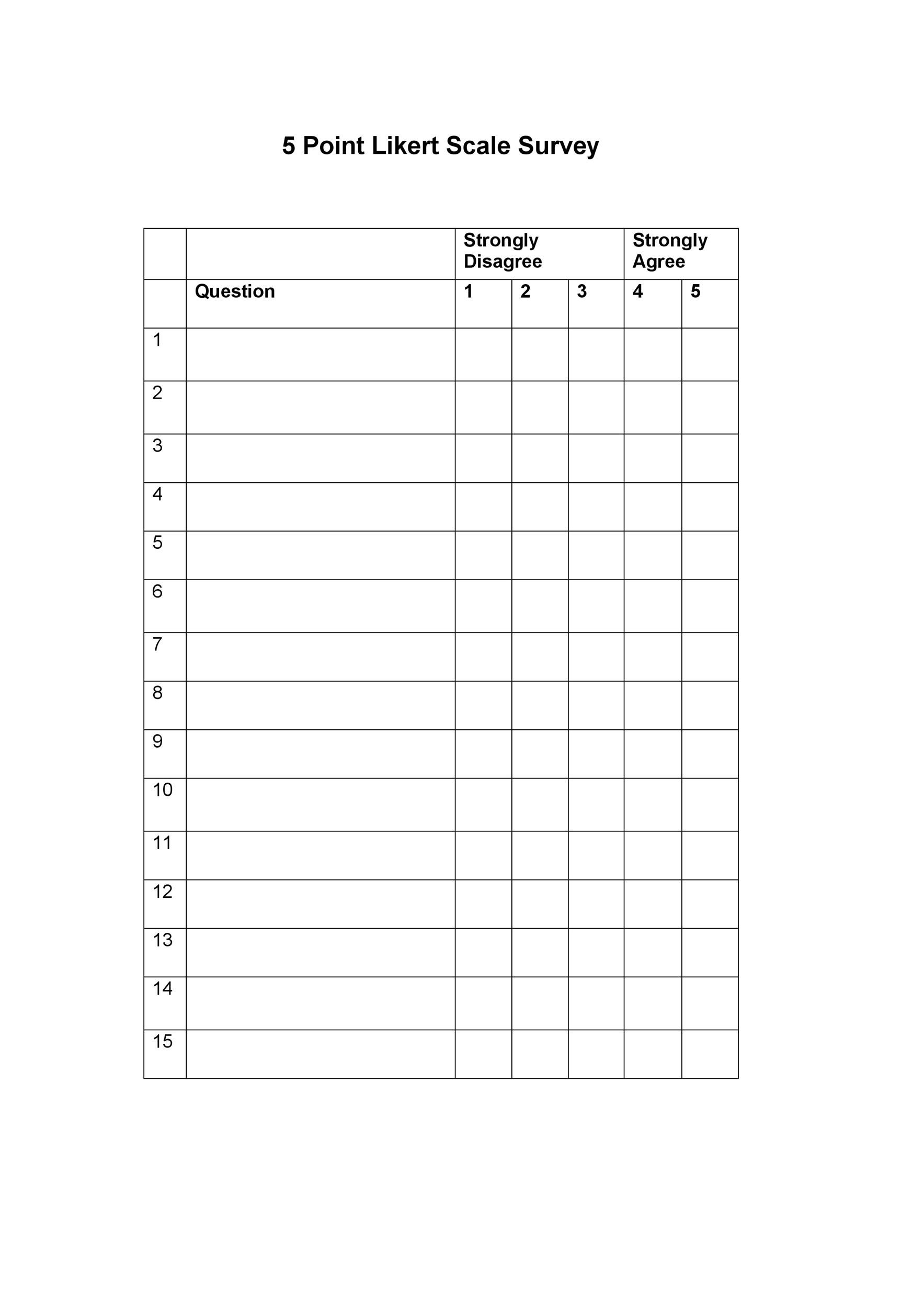
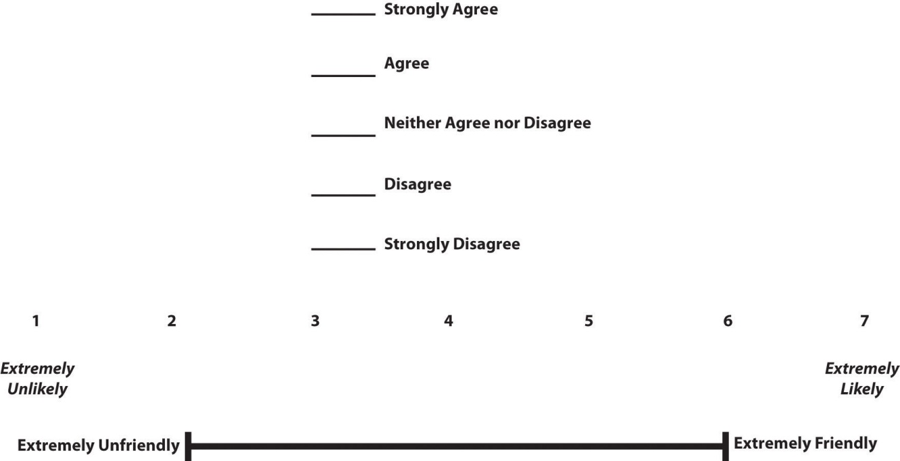
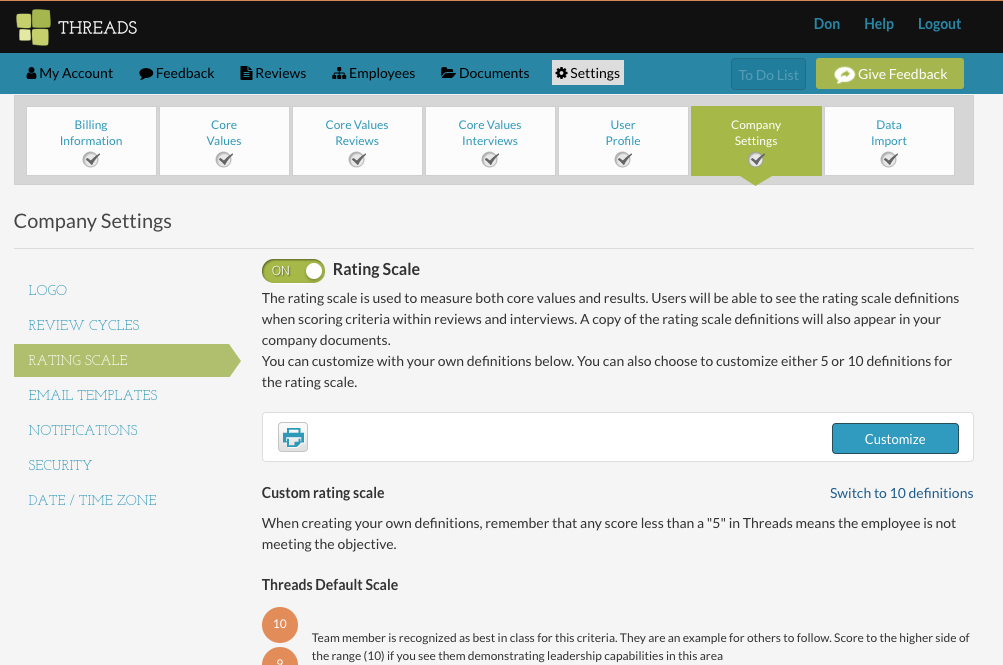
Post a Comment for "43 10 point rating scale labels"